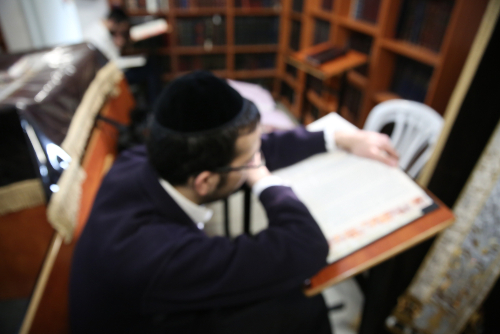Yitzchak and Yishmael, Kayin and Hevel and Shatnez
The title seems very intriguing. Indeed, the subject at hand is a fascinating one. And it has a connection with this week’s parshah, Parshat Vayeira. Let’s dive in!
Yitzchak and Yishmael
Parshat Vayeira is an action-packed parshah (Torah portion). One very important episode is the birth of Yitzchak (Isaac), another is the banishment of Hagar and Yishmael (Ismael).
After a few years of living together, Sarah said it was bad for Yitzchak that Yishmael was around him, and she feared Yishmael was a bad influence. She therefore wanted to chase him and his mother Hagar out of her house. Avraham (Abraham) did not agree with Sarah until Hashem (God) told him to heed his wife Sarah’s advice, as she had received a prophecy and was speaking the truth. Only then did Avraham Avinu (our Partriach Abraham) send Hagar and Yishmael away. This was a great ordeal for him and is enumerated as one of the ten trials which he endured and triumphed.
It is worth noting1 that when Avraham eulogized Sarah, he went through the chapter of Eishet Chayil (A Woman of Valor)2 and said דרשה צמר ופשתים – “She seeks wool and flax”, referencing these words to the banishment of Hagar and Yishmael at Sarah’s behest. The obvious question is: what connection does wool and flax have with Yishmael?
Kayin and Hevel
In the episode of Kayin and Hevel (Cain and Abel – Parshat Bereishit), where both brothers brought an offering to Hashem and it ended with Kayin killing his younger brother Hevel, the Tanchuma2 says that Kayin offered flax seeds (linen) and Hevel offered sheep, which is wool. Since the outcome was tragic, the Torah forbids the combination of wool and linen in one fabric, so as not to mix the offering of the guilty (Kayin) and the innocent (Hevel).
Similarly in this parshah with Yitzchak and Yishmael,3 Sarah saw it as sacrilege to allow Yitzchak to associate with and live together with Yishmael. The two were an arsenic mixture like Kayin and Hevel and the result it is like shatnez (the prohibition of combining wool and linen in one garment), and therefore their companionship should be avoided at all costs.
Clothing Honors Man
One level higher, Rabbi Yochanan would call his clothing מכבדותי – my honoree. This is because the type of clothing worn often displays the status of the wearer.
Rabbi Avigdor Miller took this concept further by explaining that clothing is an honor to mankind in general, because they are the only beings who actually wear clothing, as opposed to the animals who do not. In other words, wearing garments puts Man on a pedestal as the prime purpose and “main actor” of creation. We could call it, יציר כפיו של הקב”ה – “the ‘handiwork’ of the Creator”.
This is in stark contrast to the claims of the evolutionists who try their best to create a narrative as if we could correlate humans and “other mammals”. This is of course a fallacy disproven beyond doubt.
Highest Intentions
We could say that the offerings of Kayin and Hevel were of the basic intention to express gratitude to Hashem that mankind is elevated from the rest of creation. Kayin expressed this with flax, while Hevel elevated this thought by bringing up a sheep which produces the wool. It was Kayin who initiated the idea of bringing an offering in the first place. Only, it was Hevel who brought it to the next level with extra intention. Hashem appreciated Hevel’s elevated offering and therefore accepted the sheep offering while Kayin’s offering of flax was rejected.
The Sheep’s Wool
There is a Midrash4 brought down that the sheep Hevel brought as an offering was “before their shearing”. The question is: why does it matter that the sheep were unshorn? The answer could be, it was precisely the wool that was intended as an offering here.
Of course, the offering itself was the animal and “its fats”, which naturally gives the offering its special status. However, Hevel’s intention was to accentuate the greatness of mankind on the stage of Creation by offering wool, to show it’s the clothes that elevate man.
No Flax And Wool Together
The actions of Kayin and Hevel may have looked the same, but were not the same in intention. Hevel’s offering was greater so out of jealousy, Kayin killed his brother. Therefore, the Torah forbade mixing the two fibers of flax and wool into one fabric.
Going back to Yitzchak and Yishmael in the parshah, Sarah understood that mixing the good (Yitzchak) and the bad (Yishmael) will destroy the goodness of the good. She alluded to the prohibition of shatnez and the offerings of Kayin and Hevel to determine her decision.
Therefore, she took initiative to banish Hagar and Yishmael from her household, and Hashem told Avraham to accept this and listen to her. Indeed, their departure from Avraham’s holy home allowed only purity to settle in, as the creation of the nation of Yisrael was being born.
By Rabbi Gavriel Lamm
Sources:
1 Midrash Tanchuma in Parshat Chayei Sarah
2Mishlei 31:10-31
3 Eitz Yosef on Tanchuma connects this passage in Tanchuma to another passage in Tanchuma in Parshat Bereishit.
4 Eitz Yosef
5 Pirkei D’Rebbi Eliezer (chapter 21)


